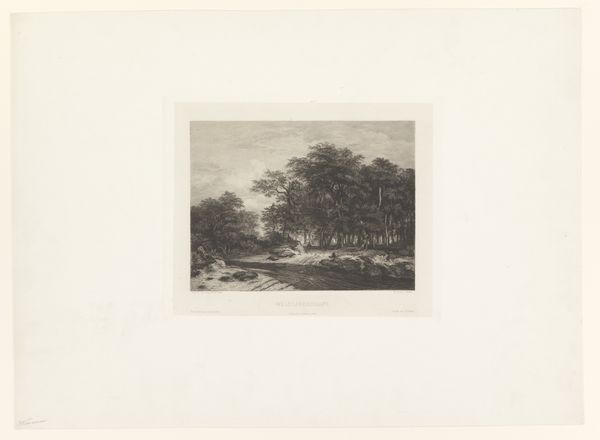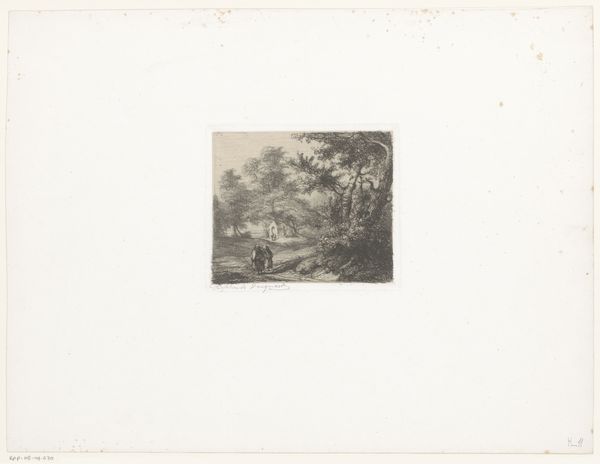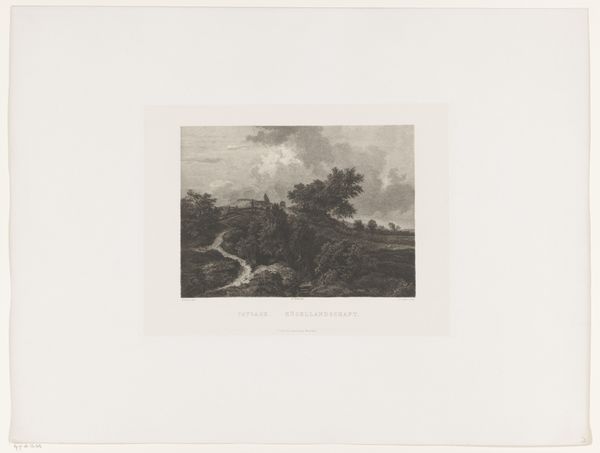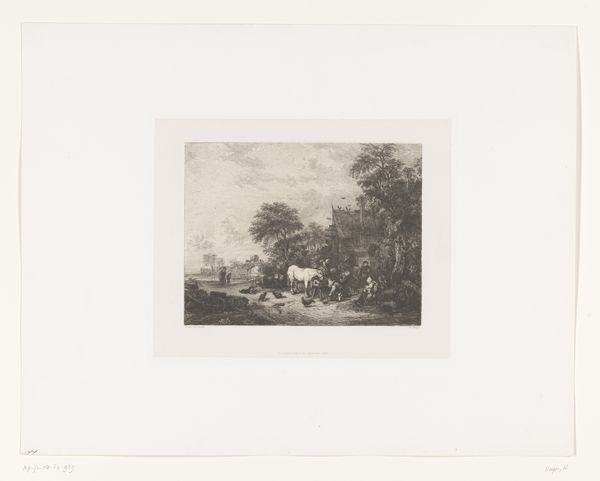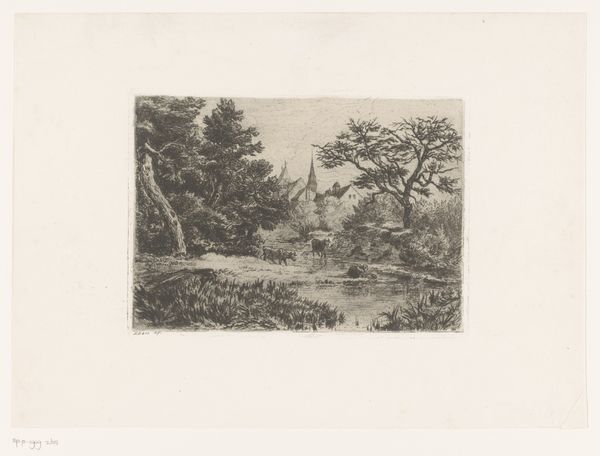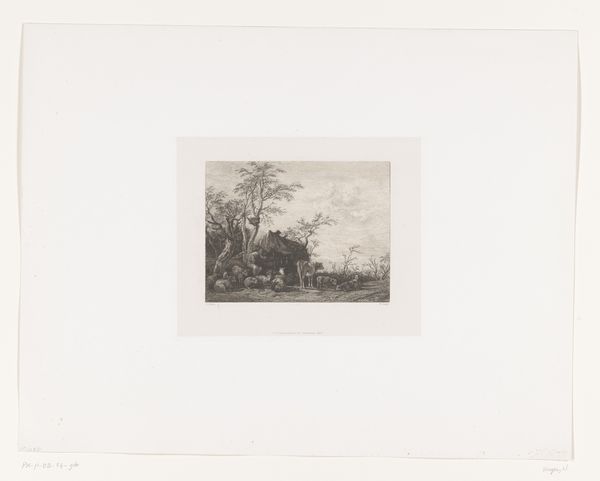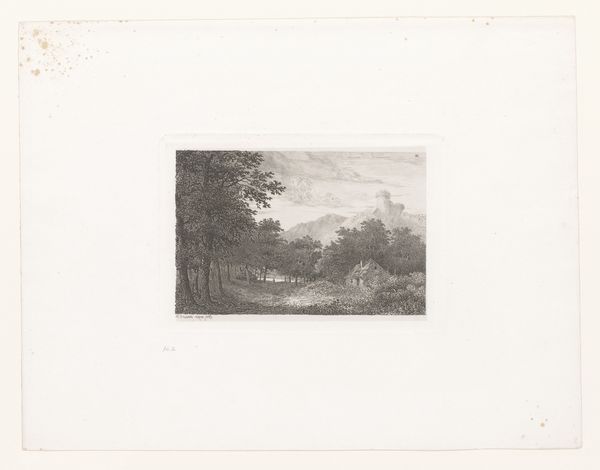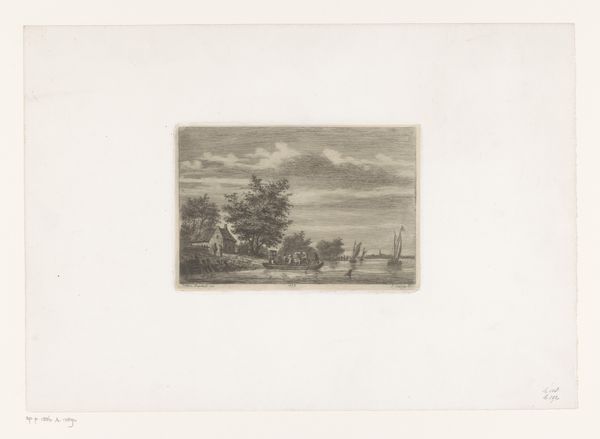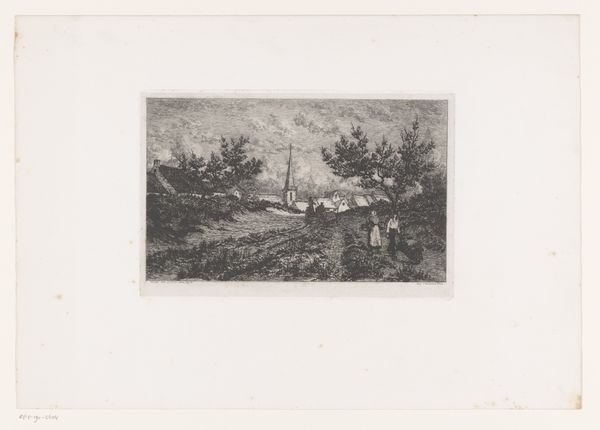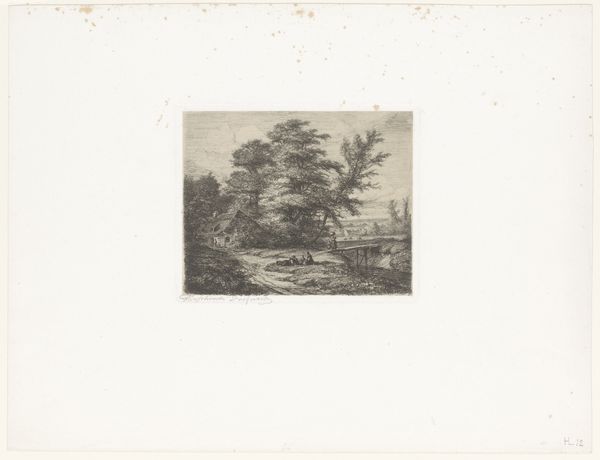
print, etching
# print
#
etching
#
landscape
#
genre-painting
#
realism
Dimensions: height 274 mm, width 349 mm
Copyright: Rijks Museum: Open Domain
Editor: Here we have William Unger's "Landschap met wadende koeien", a landscape etching, created sometime between 1861 and 1889. It strikes me as so tranquil, a window into a slower time. What do you see in this piece? Curator: Well, immediately the oxen wading across the water bring to mind ancient river crossings – points of both danger and sustenance throughout human history. Water is a symbol of purification, but also represents the subconscious, the flowing, mutable aspects of our being. Editor: That’s interesting. So the cows aren't just…cows? Curator: No, no! Their symbolic presence connects us to cycles of life, to nature's rhythm. Consider how cattle have often represented wealth, prosperity, even a sacred link to the land in numerous cultures. Note how they occupy the center, perhaps the emphasis. And those trees... they mark the space, and carry our history within them. Editor: I see. It’s a simple image, but loaded with deeper meaning. What about the medium, the etching itself? Does that add to the symbolism? Curator: Absolutely. Etching, with its fine lines, creates a sense of delicate transience, as if this pastoral scene is just a fleeting memory, struggling to surface. Consider the black and white tones – aren't they reminiscent of old photographs, further rooting this image in a nostalgic past? Editor: That makes a lot of sense. I was just seeing a pretty picture of cows in a stream. Now I’m seeing connections to cultural memory and historical echoes. Curator: Indeed. Art allows us to see beyond the surface. By examining visual symbols, we can unearth collective meanings, understanding ourselves a bit better along the way. Editor: That's definitely given me a fresh perspective. Thanks for pointing that out.
Comments
No comments
Be the first to comment and join the conversation on the ultimate creative platform.
